“I don’t know how I would deal with a snow landscape. I would be on thin ice because the whites are so undefined with the Leica M 246 it’s not even funny. Live like a vampire – avoid the bright light! Simply put always to live like red-haired person who cannot stand sunshine, and keep the camera 1/3 under exposure. Not 1 stop or 2 stop, just slightly under-exposed.” — Thorsten von Overgaard, The Leica M246 goes to Paris, 2015
As with most things in photography, this excursion started with a view. More pertinently, it began with a view through a certain viewfinder. Not any optical finder but THAT electronic viewfinder, the amphitheatre in the SL 601. Those who looked through its ground-breaking aperture in 2015 already know exactly what I am talking about. One look and I was, like others, infatuated.
Thus began my journey into Leicaland. I had not gone to the store to look at the SL but a Q. I walked away Q-less but certainly not clueless. I tried not to think about it; I just couldn’t get that view out of mind. Back I went to check it was as bright, clear and magnificent as I thought. Sure enough, it was indeed magnificent. So the deed was eventually done, and off I pottered to the Swiss Alps in winter equipped with the SL 24-90.
Printing big
For the kind of scenery I like to capture, this set-up is proving to be a winning combination of versatility and guaranteed sharpness. Alpine mountains present complex, fragmented subjects to the camera and I found in the SL, then SL2, a nigh-on perfect tool with which to pull that detail out and print it big. When touring on skis, I can sometimes cope with the extra weight of the incomparably sharp zooms of this system. IBIS means I can dispense with the tripod. Lightweight pods in deep snow are of dubious benefit anyway. Whether winter or summer, however, increasingly I found myself shooting primarily black-and-white images and becoming utterly disinterested in alpenglow.
While in no way dissatisfied with the results from my SL, I began wondering whether weight and bulk could be cut by using an M Monochrom and a couple of lenses a 21 mm Super-Elmar and a 90 mm Summicron APO. In the 70s and 80s, the mountaineering camera system of choice was the Olympus OM and a selection of Zuiko lenses. Compact, light and eminently pocketable, it was in the kitbag of more than one member of Chris Bonnington’s 1975 “Everest the Hard Way” expedition. Why, therefore, could I not make a mono M system work in the mountains, knowing full well that the rig is not dust or weather sealed?

Lockdown descended, M10Ms were too expensive and unavailable, but a Typ M246 could be had at half the price from Leica Manchester. Living landscape photography like von Overgaard’s vampire thus began for this once red(dish) haired individual. It would be late August before I got to test it in the Alps and get an answer to von Overgaard’s question of what would happen with a 246 shooting snow, but before that I made it my go-to camera for everything. What did I discover in my journey to the dark side?
Vampire business
I found a simple joy in seeing the dowdy DNG output burst into life in Silver Efex Pro. The files are as close to true digital negatives as I think we probably come at this point in time. Contrary to von Overgaard’s injunction, I found that this living-like-a-vampire business was better at a good -1EV than just a third. What worked for him in Paris had little prospect of being transferrable to the Dark Peak, and it wasn’t. Provided ISO was not at 6400 or above, I found the files afforded complete creative control. I learnt that no matter how dark and dank the file looked on the LCD ( they actually looked better on the screen than when loaded into LR or C1, I needed to trust the sensor to yield something decent once the correct tools were used.
I thus marvelled at its extraordinary shadow recovery. If you wanted, detail in zone one could be found and sent all the way into zone three. I found the images to be far less clinical than my SL output. Dare I say it, a degree of creativity was perhaps set in motion that I never thought would stir. All driven by the playful latitude which lurks in the mid-tones of these Monochrom files. I found that instead of fretting about ISO increasing, I could let it float upwards to levels which would produce unappealing outcomes on a colour sensor. Noise looked like grain, detail was retained, and the mid-tones seemed to have a pleasing glow just not found on the SL.
Initially, I tried to put effort into using the correct screw in coloured filter for the scene typically favouring orange or red, but my discipline waned. And I found it not as pivotal to satisfying images as I supposed. More important was hooking up a Lee 75 filter system to enable me to use a polariser, six-stop NDs and N Grads. Now I can immediately sense the disdain. Surely, no one burdens such a svelte camera with these very ‘analogue’ contraptions? It does indeed look like a tragic confusion of concepts strapping this kit onto the archetypal reportage camera. But if you do not care for exposure blending (much or at all) and you want to slow things (like water and sky) down, there is no real alternative when trying to misappropriate an M camera as a landscape tool. I could run and skip along the moors with such lightweight kit, chasing what I thought was Mono light.
Hooked on monochrome
So far, so good. It’s not even winter, and I have not ventured anywhere near a city for lowlight urban shooting to test its higher ISO performance. Still, already I am hooked on the simplicity of Monochrom only work. I developed a deep trust that, in the depths of the darkness I repeatedly committed to the sensor, something exciting could be extracted using the superb contrast sliders in Silver Efex Pro. I stopped looking for an essentially polished image in the camera, probably for the first time since picking up a digital. As long as focus and composition were sorted, radical underexposure to save the highlights became a new modus operandi. My shutter-to-chimping ratio improved significantly.
July 2020 was perhaps the most sultry on record here in north Derbyshire with greyness predominating on far too many evenings across the moorland edges. A month which I might ordinarily have written off for improving my mono game slowly shaped up into one in which I felt I was taking a huge step forward. I found myself high and far out on the gritstone edges an hour or two at most before darkness when there was nil prospect of a sunset or golden hour. But, equipped with the M246, I was capturing scenes out of the drabness which would just not have presented as sensible with my colour eyes on.
Now I am not for one moment pretending that a mono conversion could not be obtained from what I recorded this July. My point is that by starting to think and to visualise these edges through the mono-only sensor of an M246, a new type and time of photography began to open up for me. I discovered that I did not always need hard, high-contrast light to produce satisfying mono images of the natural rock sculptures which adorn these edges.
In the Valais
By late August, I was able to return to the Alps for ten days of mountaineering in the Swiss Valais. During this trip, my practical difficulties in using the rangefinder began to coalesce and gang up on me. I got around shooting the 21mm lens by using the VF-2 electronic viewfinder rather than a strapped-on optical wide-angle device. Being benevolent to this aged viewfinder, it is at best a guide to what is going on out there in front of the camera, and that is especially the case in changing outdoor light. My eyesight is disastrous in multiple respects, and rangefinder focusing was a challenge from the start. I often use short telephoto lengths in the mountains and tried a 1.4x magnifier when using the 90 mm APO, but it did not seem to improve my hit-rate on nailing focus via the RF.
Every time I picked up the SL2, it brought into stark contrast to the difficulties I had in focusing the M246 and began to test my willingness to persevere with my new-found mono habit. It is not that I craved autofocus. For much in the mountains, it is hardly critical. What I did increasingly long for were ‘modern’ focusing and compositional aids. Manual focusing through the modern generation of electronic viewfinders is, in my view, an unadulterated photographic pleasure when out in challenging environments. On occasions, the magnification and peaking options help, but the calibre of modern EVFs is such that, even with my mix of Magoo-like short-sightedness my simultaneous need for near-sight correction, my lazy left eye and my poorly corrected astigmatism, even I can see the scene pop into focus through the viewfinder of SL cameras.
I began to want to move my focal point around the landscape to produce different effects and not to be confined to a central point when soldiering on with VF-2. Zone focusing at f/8 was not the answer, but it had been my predominant means of getting shots using the 21mm lens. Factor in mist and fog enveloping my state of the art varifocal specs in the winter months and I had more than a little doubt that I could make the M Mono system satisfying and fun to use.
I was not, however, prepared to kick the habit that easily. The solution, it seemed to me, must lie in Leica producing a high-resolution OLED viewfinder that could slot onto an M camera. How naive! What heresy!
Investigation revealed this was never going to happen for the M246, but that something better than the Visoflex might, just might, be fabricated for M10 series cameras. But there was nothing in the pipeline.
Enter the Q2M
Now, a Visoflex atop an M10M is a jump up from VF-2, but it is still a quantum leap behind the viewfinder we now have in SL2. A sense of proportion also intrudes. With just a few quid back from £8,000 for an M10M and Visoflex, it made little sense to have still a sub-optimal set of focusing aids for my eyesight deficiencies, albeit an eccentric focal point at least became viable in Live view of the M10M.
I was reconciled to hanging on to the M246 and biding my time, but then came the Q2M. I reflected that nearly always I had the 21 mm lens strapped to the 246, and so it came to pass that my mono habit could be fed by the ‘apparent’ limitation of having a fixed 28mm lens. In what must rank as impulse buying within one hour I got the 246 and M lenses valued at Leica Store Manchester and the team there quickly sorted out a cash-back deal to equip me with one of the first Q2Ms to go into orbit.
The Leica Q2 Monochrome is, quite simply, the continuation of the joy and discovery I experienced using the M246 taken to the next level. It may feel intrinsically less serious than an M camera and, perhaps, testing will show that its sensor is not quite as high-ISO-capable as the M10M sensor. This, for me, is irrelevant. The feel of the files is every bit as deep as M246 DNGs. I now sense that in Q2M I have the aesthetic capabilities and fun which I found to reside in the darkness of M246 files, but with the compositional and focusing aids which will nurture my mono habit for at least another half-decade. Already, I can say that it is less of a vampire than the 246, more able to cope with some degree of brightness.
Delight
A week in November is not a long time to really get a detailed sense of Q2M. But already I can tell I it is going to delight even more than the M246. First off, an ISO level which you can confidently allow to float to 6400 before any unpleasant luminance noise intrudes coupled to IBIS renders the Q2M a landscape running gun at dawn and dusk. It is not often that landscape shots require or benefit from wide-open shooting. Shooting without a tripod, at f/8, at 1/15s on the Q2M at dusk becomes a cinch because of its ISO insensitivity.
Consider the throwaway shot of the creased gritstone boulder below. By rights, this should just not be possible. Not because the camera can’t see in the dark but because with needing to go as high as 6400, we would expect truly awful rendition of detail, all the more so as we pull the shadows out. Sure, there is noise—we can see it under the rock where shadow recovery has been at its most aggressive—but what may always continue to surprise and delight is that with these mono sensors we no longer feel that we are just getting by with some wretchedly grainy, impressionistic snapshot.
Instead, what we have here is very usable retained sharpness of the creases (which we could usually expect noise to smudge terribly) and, most astonishingly, individual pine needles still clearly differentiated and not blown out. The credentials of the Q2M as the vampire’s accomplice seem to be truly intact.
Fecund
Next up, the middle tones of the files appear to me every bit as fecund as those from the M246. Differences are nonetheless apparent. The doubling of the resolution yields crisper fine details. Quartzite pebbles and pits in gritstone obelisks are definitely more detectable without peeping too closely. In fact, textures of all kinds are just more prominent because of the resolution gain. The greater prominence of such detail might not suit a more impressionistic style. Still, the creative potential of a compact which can render detail in close-up shots on a par with 50MP modern medium format sensors is, in my book, an exciting new frontier in walk-around landscape photography.
There is then the dreaded issue of highlights. Von Overgaard’s playful rendition of his experience of using the M246 made, in my view, a compelling point: that the bright zones were handled very badly and zones 8, 9 and 10 got merged into too many bright blotches without detail. My sense so far is that, while major highlights still need to be watched like a hawk, that is now simple through the live-view histogram in the viewfinder. Lighter tones (perhaps 8/9 in the Adams system) appear to be rendered with more nuance and subtlety.
One of the problems I found with the M246 files is that very light grey or green lichens on rocks and gravestones would not appear blown out on the histogram but would regularly have no detail when being processed. Already, on the same subjects, I see more texture in these high(er) lights in the images from the Q2M. Snow was indeed a problem for the 246 sensor. Von Overgaard was right to be concerned. Its inability to consistently produce high(er) light detail on snow-clad alps late this summer was a disappointment and a reason why I concluded it would not ultimately work as a landscape tool in such environments with the outcomes I wanted.
Astonishing
The jpeg files are extraordinary. Not because the film simulations or the toning options are especially pleasing. Instead, what has astounded me is just how far these files can be pushed and pulled around when processing without the usual degradation this would inflict upon the file.
Robust is an understatement. I confess to using the larger-sensor Fuji system for some work, and its jpeg output is also very malleable. My initial sense is that these Q2M jpegs may even have more latitude in them. It is thus not catastrophic at all if you happen to forget to set the file format to DNG or simply wish to go with the weak sepia and selenium jpeg toning options.
As to those, well, I am not immediately impressed. I fear the software engineers have painted with a heavy brush. The ‘weak’ options look like 40% tonings in Silver Efex Pro. Toning is, par excellence, a matter of personal taste and judgment.
Nonetheless, compare the three shots below of the same scene: weak selenium out-of-camera; weak sepia OOC; and then a DNG file with structure and a 15% sepia tone applied. My own view is that the toning options may best be left to application when processing. It is a pity. With this much resolution on offer, the subtlety of toned jpeg output really should be more attractive than this. It is not sufficient for Leica to retort that the Q2M is designed primarily with DNG output in mind.
The aids to framing and composition are just brilliantly executed in Q cameras. The horizon line is a simple, intuitive tool for any landscape camera, especially when shooting quickly and off a tripod.
On the M246 I had two small red dashes which I found just plain unhelpful. I don’t want to spend any unnecessary time levelling images in Capture One when it can be so easily achieved in camera.
A new landscape camera
The wind blows for probably three hundred and thirty days a year along the grit edges of the Dark Peak. A cloud of fine pounded dust can be seen in the air on the wilder nights. These are not really places for cameras without dust sealing.
Whereas I would never have wandered about with the M246 at the ready—it went back into its bag immediately—without being heedless the extra degree of dust sealing in the Q2M has left me content to bumble along the edges at dusk this week with the camera where it should be: out and at the ready.
While many expect the Q2M to become the most luxurious ‘street’ compact yet delivered, for me, it will now be my constant companion on regular forays across the edges and plateaux of the Dark Peak.

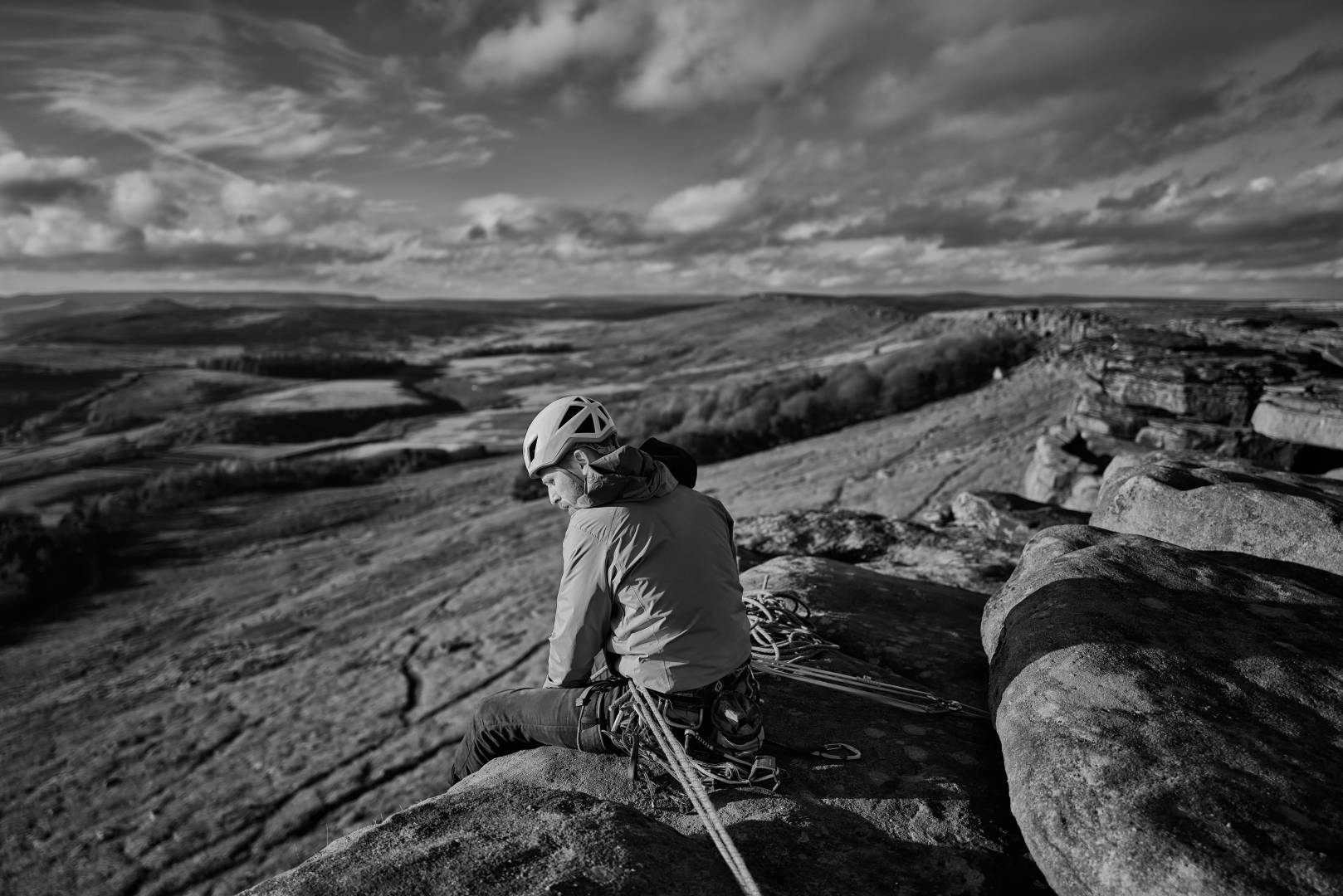

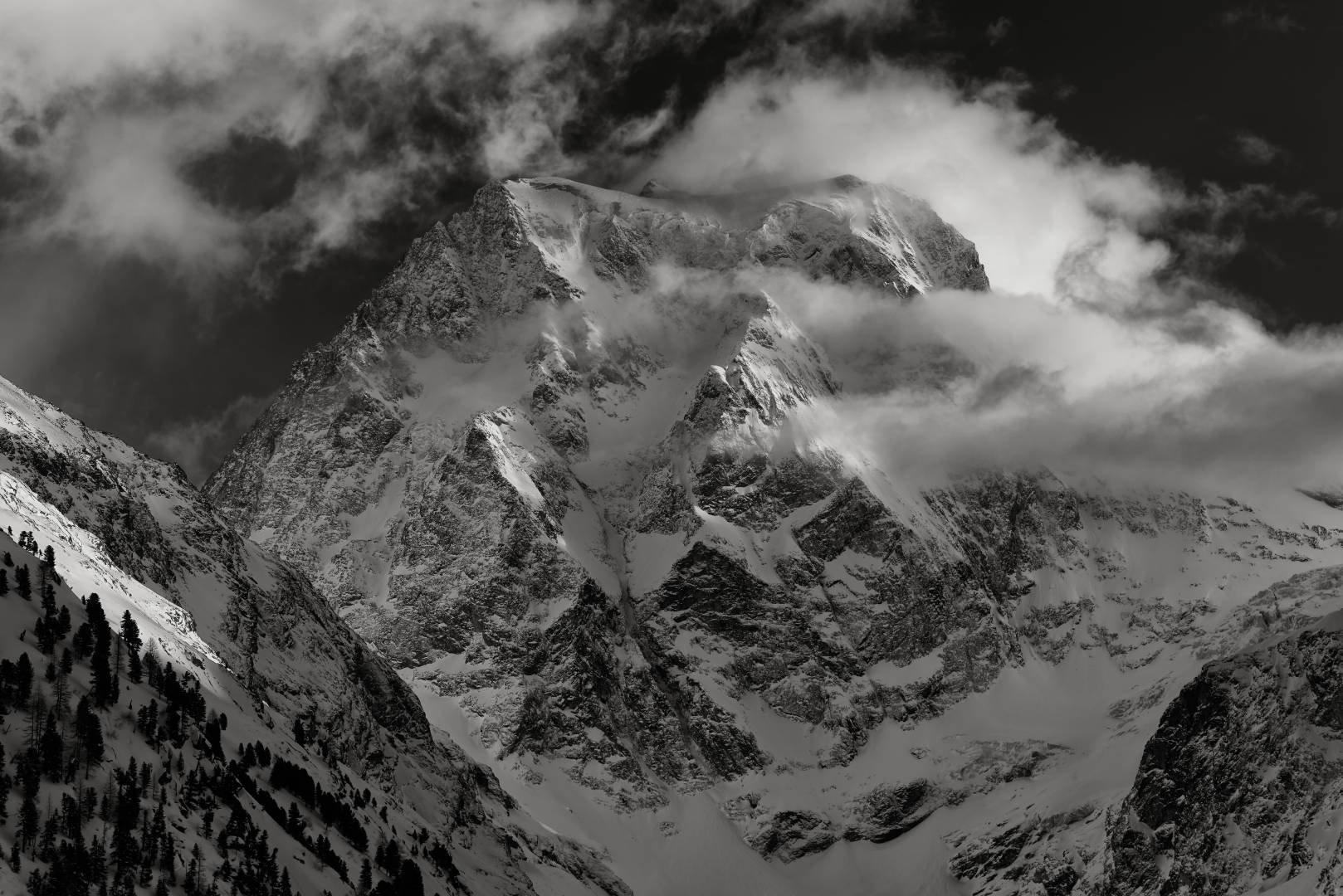
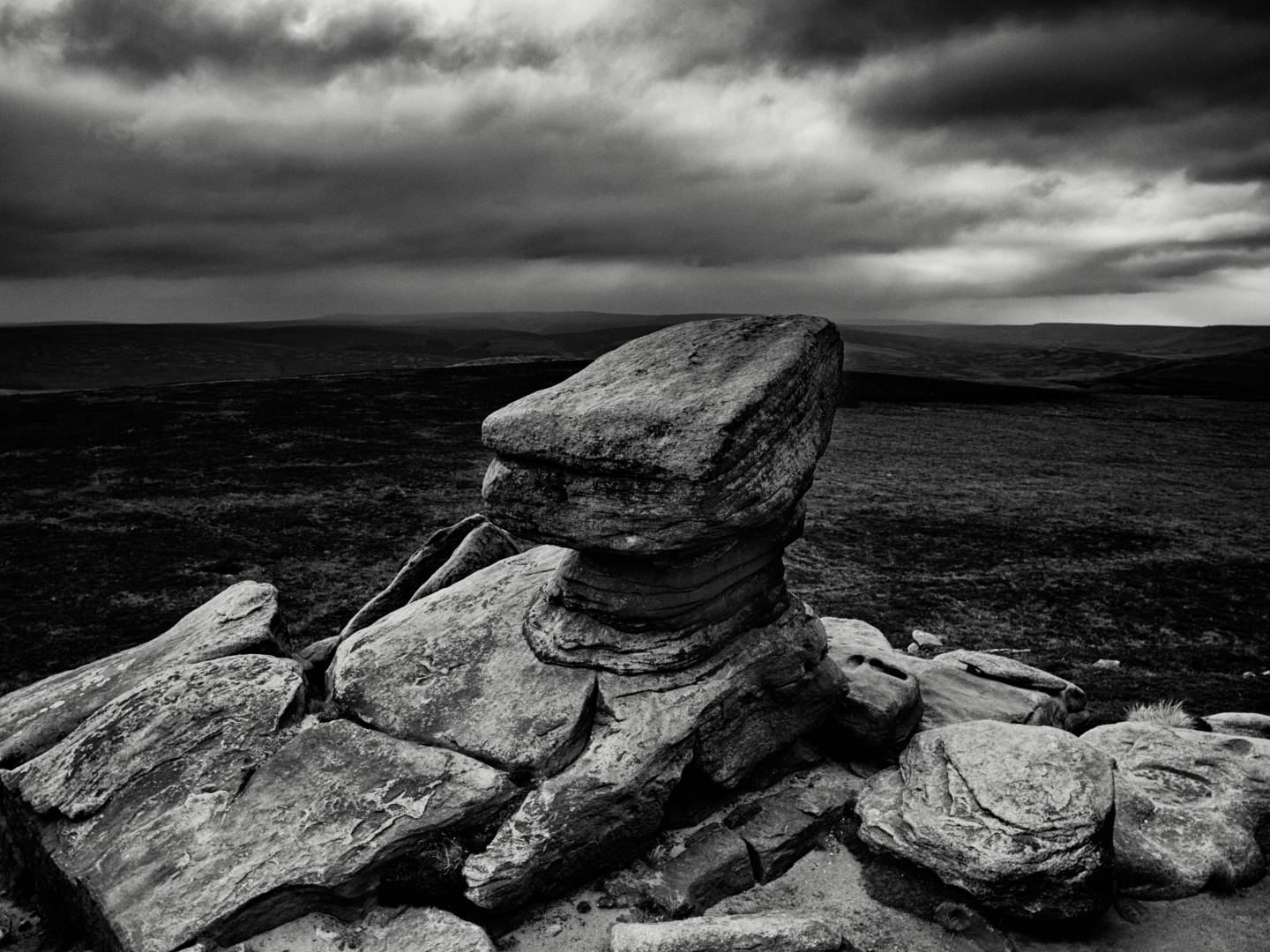
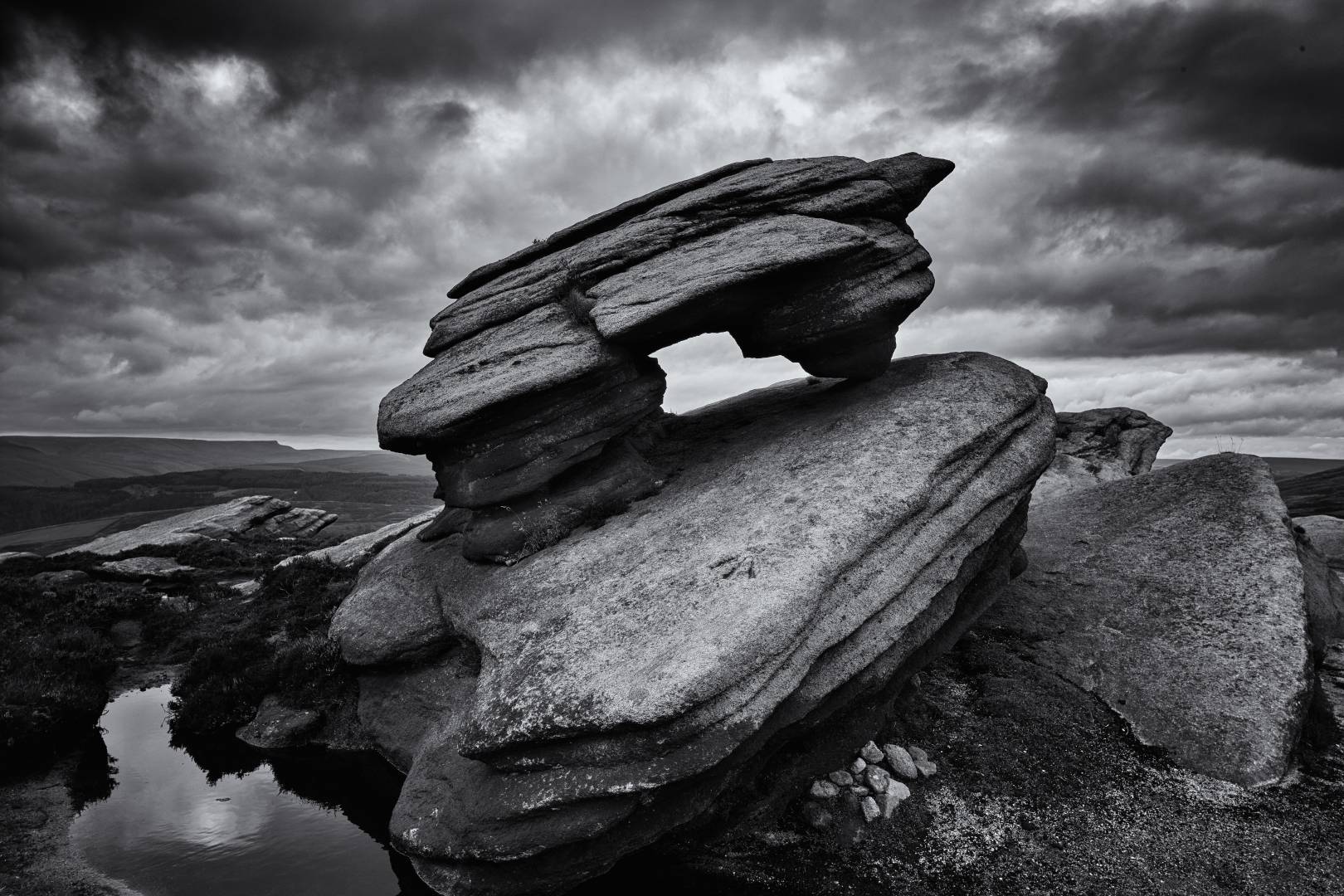
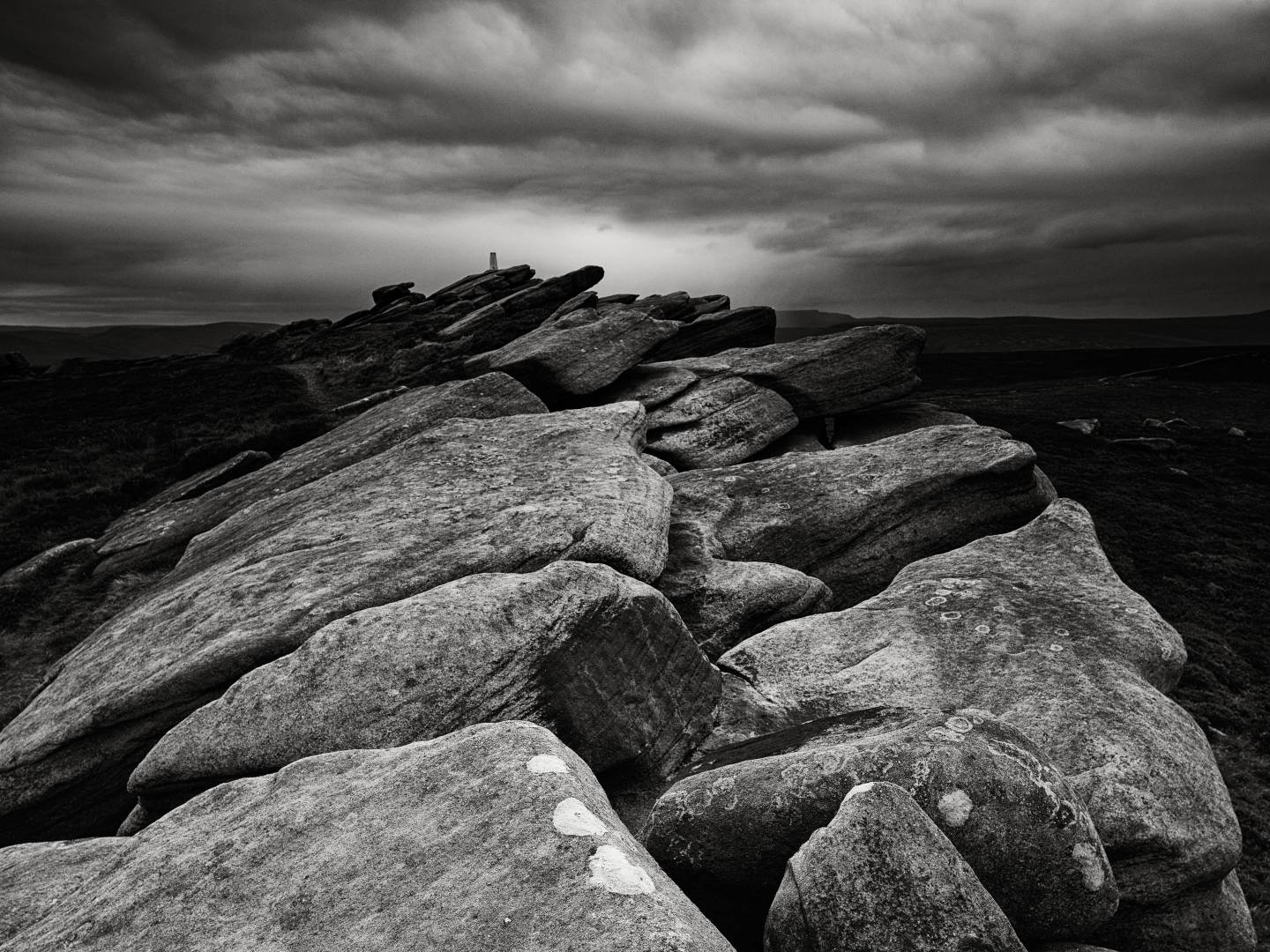
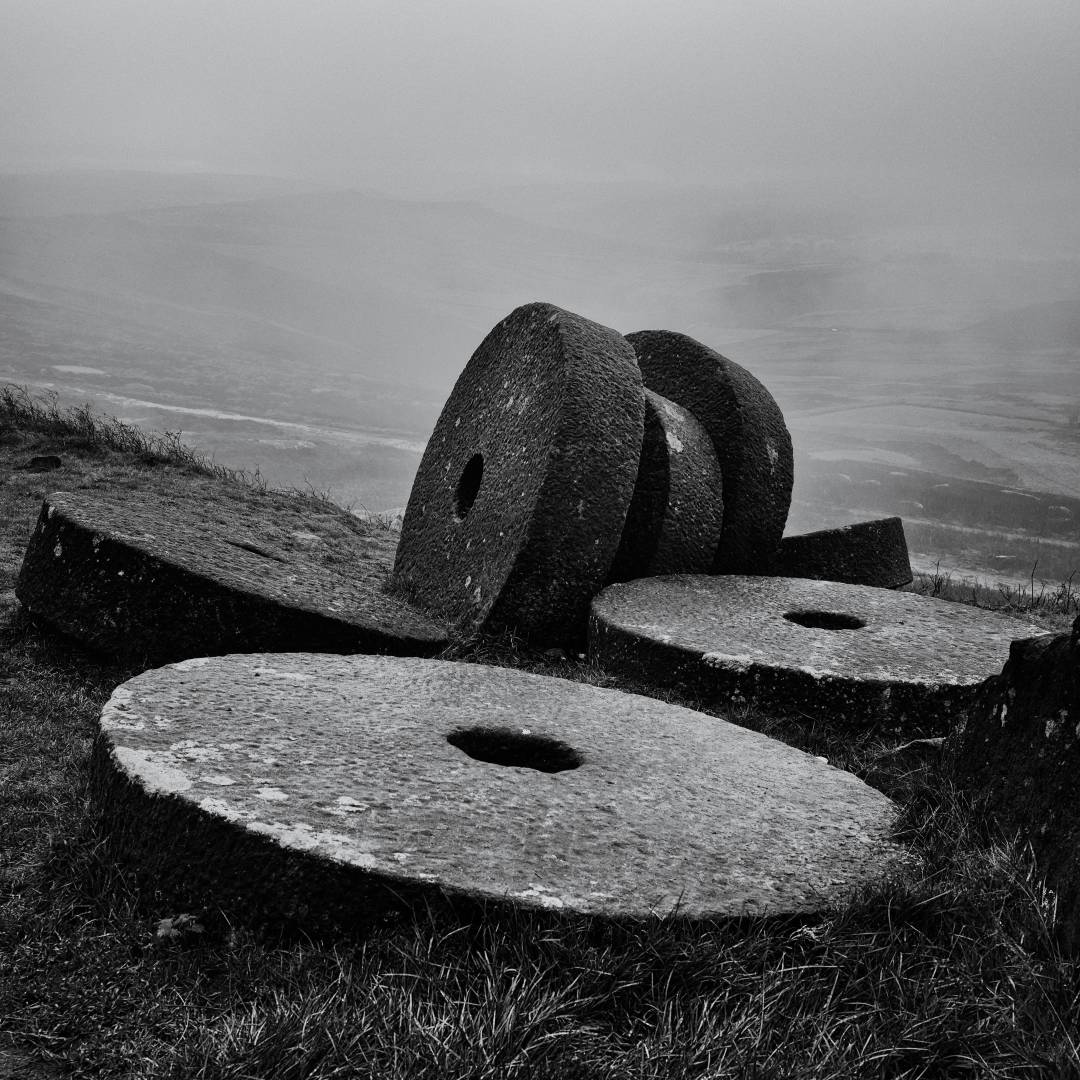


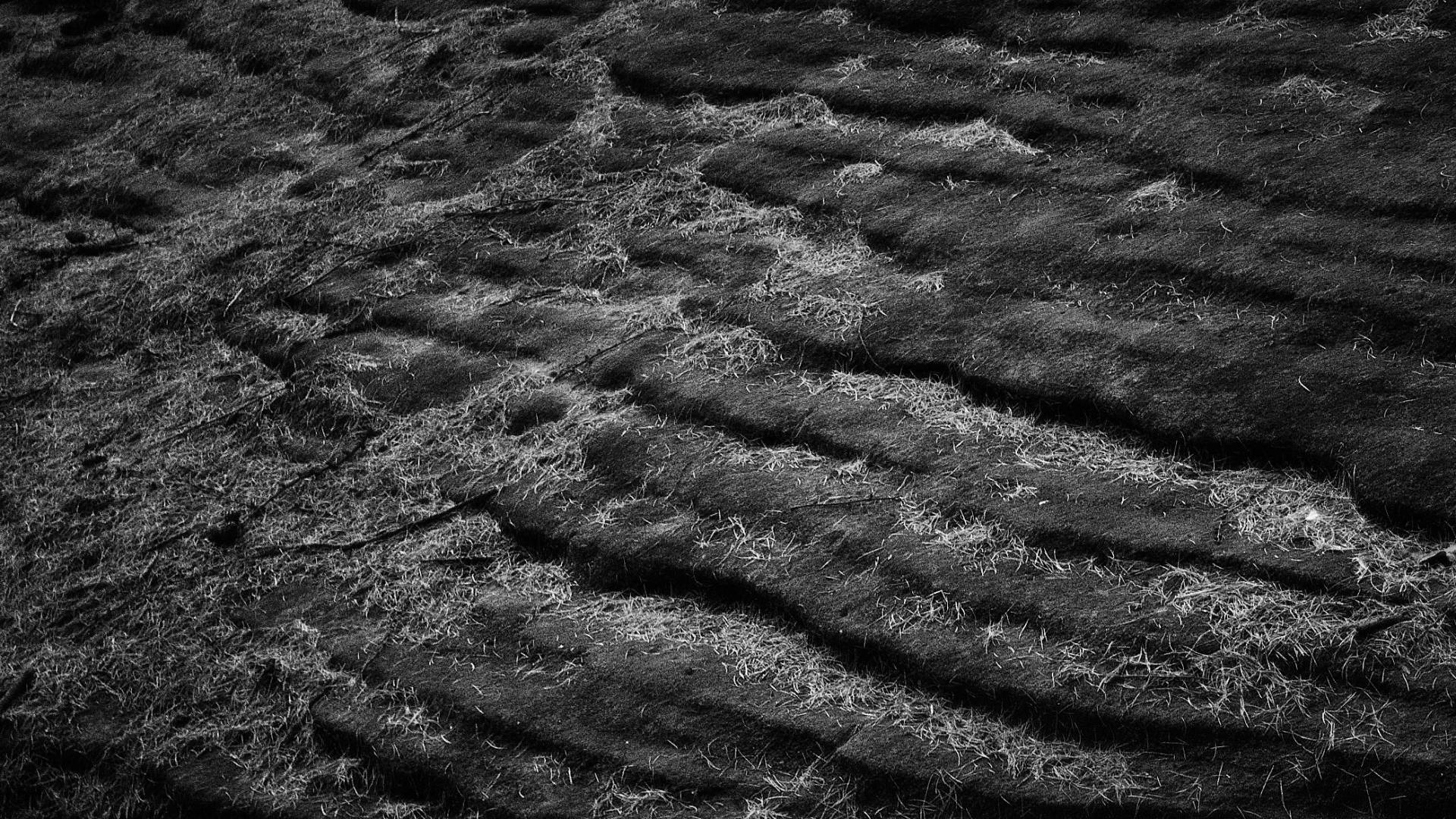
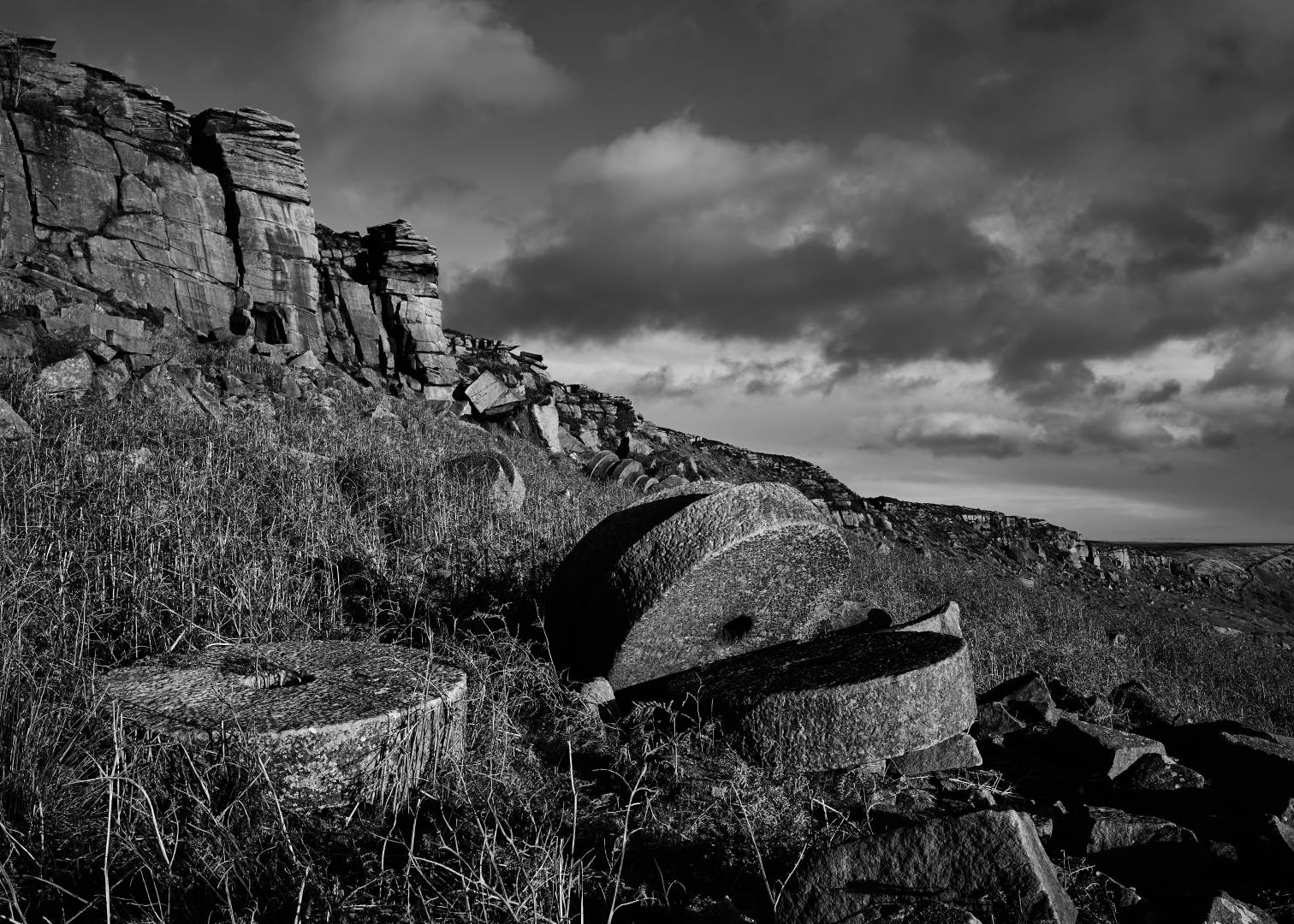

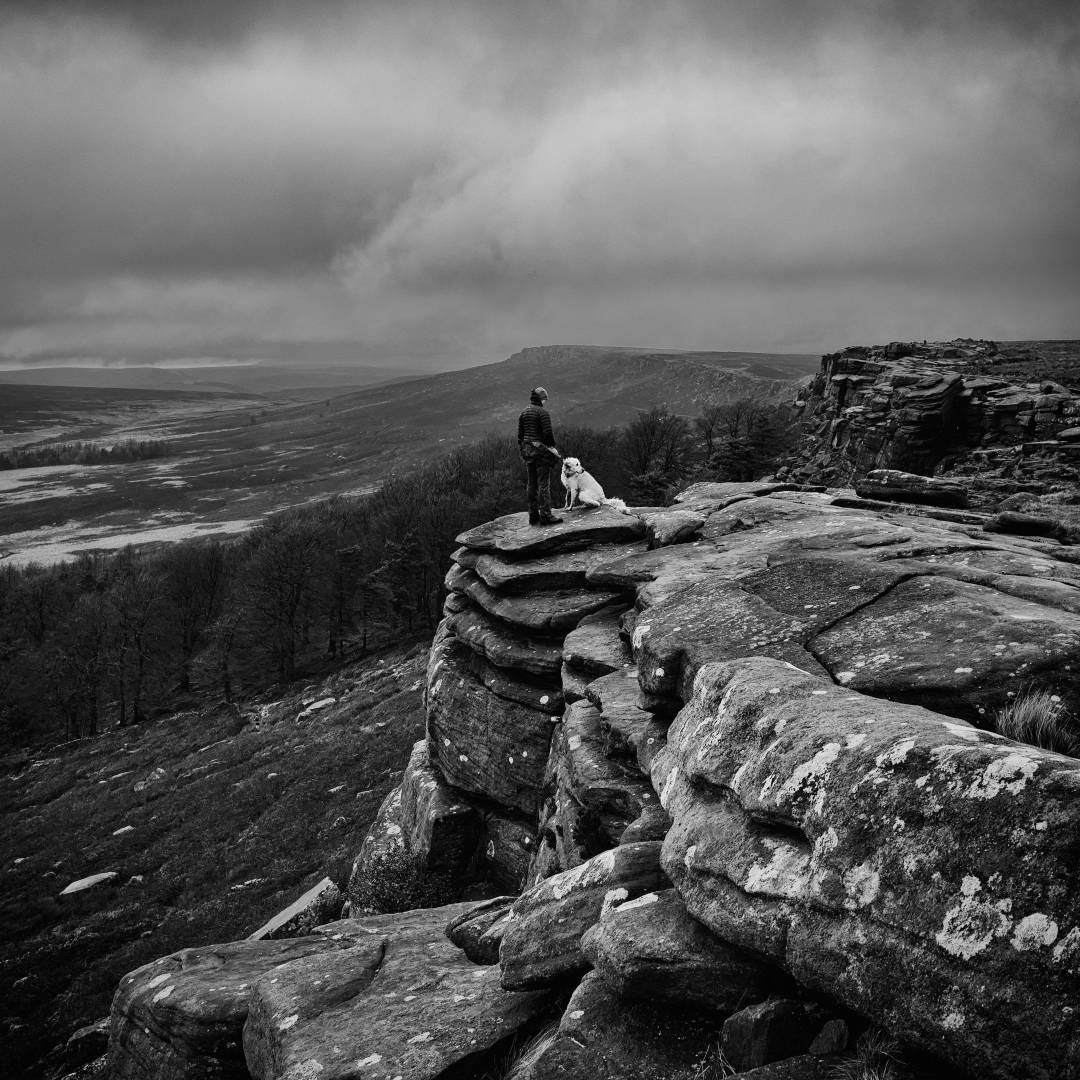
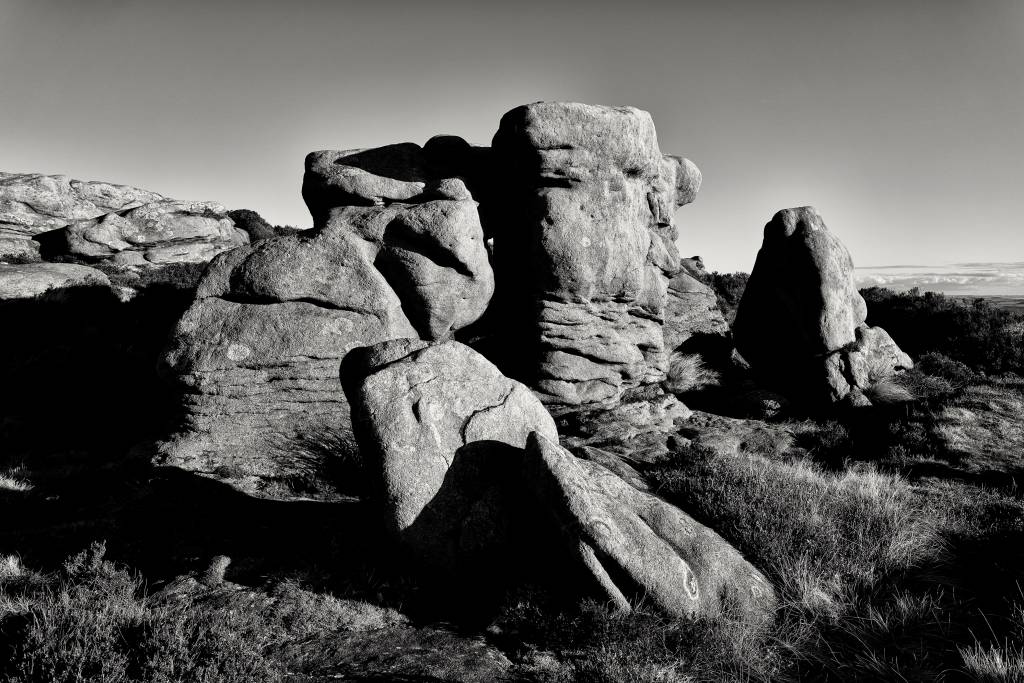
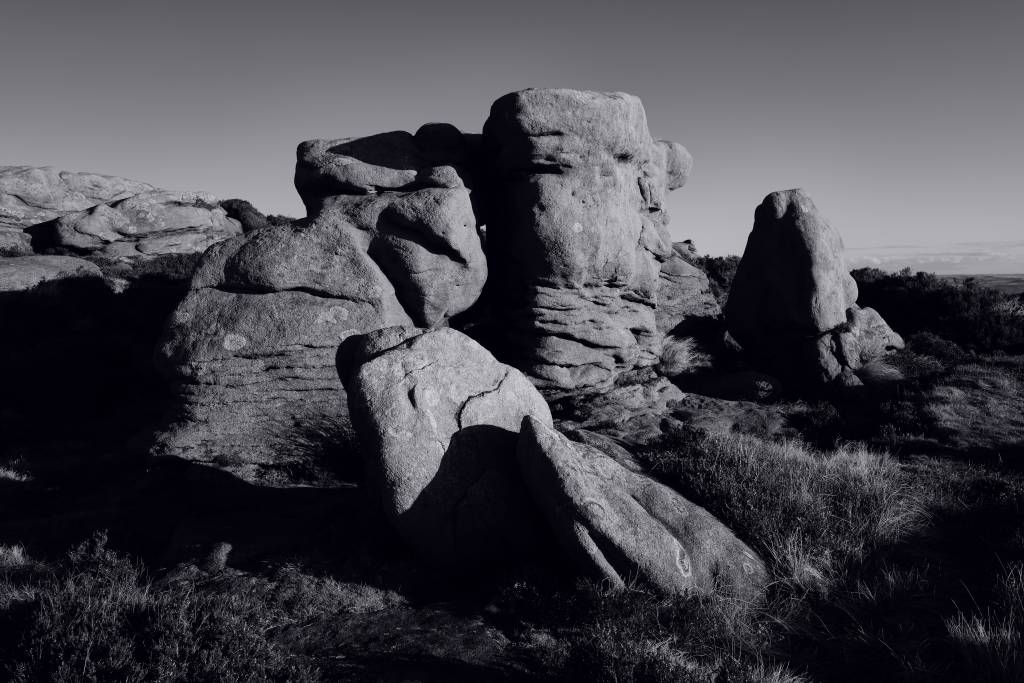
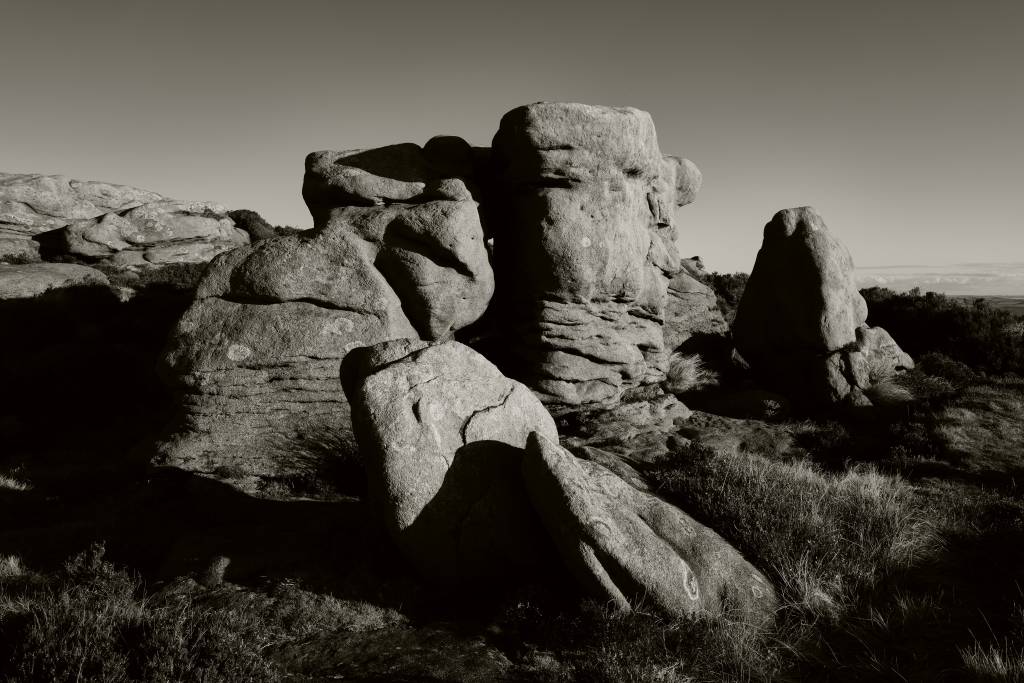
This is an amazing journey Darrell, with a wonderful series of images. You are doing that Q2M proud, and the wonderful Derbyshire scenery works well with the camera.
Thank you for sharing this with us.
Best wishes
Dave
From this philistine’s point of view quite easily the best article I’ve ever read on this website! I am fortunate enough to have owned one of the first M10M since the day it was launched. (also from Manchester) No regrets whatsoever, and cropped to square makes a lovely alternative to the Hasselblad. Note I use the word alternative rather than replacement. The whole film vs digital argument is anothe subject. 95% of the prints I make are Black and white. I have had all 3 of the Monochromes and loved em all! I seriously like your Debyshire shots and have to say I agree with just about all you say, so I am also tempted by the Q2M. Should you ever do your “coffee table book” I’d be up for it!
So the use of filters, all my M lenses (21, 28, 50, the tiny 90mm m macro) normally have an Orange filter, lens shade and no lens cap so they are ready to go. The use of C1 or Silver efx with Lr and CS6, all jibe with me! We are absolutley on the same ground. Well chosen and well argued, and thank you for the pleasureable read!
John Gould
John
Those are kind words indeed. I have carried on since I wrote the article, probably over using the Q2M. In some conditions the ‘cleanliness’ of the images is quite astounding. I have started to think of it as a pocket field camera. Pre New Tiers Eve and then Lockdown I took it on a very long excursion in the Lakes on a baltic day but with superb contrast and the results have floored me. It is lazy but I have given up carrying a tripod with it.
I have, however, hit the buffers with some high ISO images in Capture One 20 (actually above 1600). I just do not seem able to get the DNG’s to render properly or to get the noise under proper control when there is a lot of dark in the image. The JPEGS are invariably cleaner.
I can see a clamour developing for one or other variant of SL2 with a Monochrom sensor.
well Darrel I think you have pretty much ruined my weekend and I face another night unable to sleep with all the tantalising B&W options dancing before my eyes . Let me paint the dilemma and then ask you and the other talented contributors for an opinion please (whilst always knowing I have to make my own mind up in the end).
I have a wonderful M10-P and convert nearly all my photographs to black and white. I have an X100V to take colour pics pf wriggling grandchildren and other difficult to focus scenes. I take B&W pics on two or three (ok four) other fab film cameras (MP, M3, Rollei 35 SE, Trip 35). I have utterly convinced my self that some will have to go to fund a digital monochrom(e). So you already know where this going…
I am enthralled by the M10-M and its form and function suit my eye as as an M10 user. I have the lenses but I can’t afford teh body for a good while yet, fixed income pension and all that… Like you I am highly convinced by the 246 and there is a good one with EVF2 at Leica Duke St where Yumi is being fabulously helpful and patient. I won’t be walking in the ‘alta montaña’ for wide photography. Do I want to make an M compromise that ignores my ageing eyesight and blow the budget and give in to instant gratification and buy this very nice 264 or… should I 1) I just give up some luxuries and save like crazy until summer next year and trade in my M10-P and add it to some hard saved cash for an M10-M. Well yes possibly… or 2) go on, buy the 246 now and work out my thoughts with it in hand and I could always put this into the grand trade in next year or 3) the elephant in the (my) room and go for the Q2M and autofocus for my failing skills. The thing about this, and I am pretty convinced by the logic for why it is a good/great thing is… I am not a 28mm guy, much less a 21mm one – I almost always use 50mm so what this piece doesn’t cover is using framelines in DNG for the longer options and the painterly issue of what happens to the look and feel when applying 50 or 75 to a basic 28mm shot. I would love to have your feedback on the broader issue of should I like you go for Q2M as well as this later thought on using the massive files to crop down to 50mm and 75mm.
Thanks you so much for reading this far if you have managed to ;-). This is one of the very best essays that I have read on this thoughtful site
All the very best
Des
Hi Des
Sorry I was not there to assuage some of your anguish. I expect you have resolved your dilemma by now. If not, here goes:
1. Crop modes. What I will instantly say is that the cropping modes are not proving to my liking. I do use them. However, I am yet to keep a jpeg created by the crop modes. Along with others I would prefer it if Leica included aspect ratio jpegs in a firmware update for Q cameras. I presume it is not inconsistent with their current crop options. I can only envisage disappointment from the crop modes if you are able to use 50mm and 75mm m lenses.
2. Autofocus. It is a blessing in cold conditions and when clicking faster than is perhaps advisable on a mountain excursions. I find that unless using the lens in macro mode I now do not beat myself up about not using manual focus as the default setting. This brings a certain detachment from the process which perhaps feels less satisfying than carefully calibrating the turn of the focus ring wit what is sharpening up in the viewfinder. I fear it is leading to some sloppiness in my control of depth of field.
3. Stabilisation. I think for an M user such as yourself the benefits of IBIS are difficult to overstate. These higher res sensors are less forgiving of shake than the 24MP 246. The IBIS makes it realistic to shoot at 1/30th of a second and expect to get a very sharp image. I might boldly say that M users may not know what they are missing until, say, they shoot a 90 summicron on a stabilised SL2 or S1/ SL2 body at a shutter speed not twice or four times the focal length but half of it.
4. Lenses. The crop modes just cannot compete with the look which M 50/75 mm lenses can produce.
If you did go for the 246 as an interim to an M10M I am going to trust that it has not disappointed.
Dear Darrel,
Half a year or so on now after some lockdown, some isolation and a decision to get a new ankle at the end of the year (ouch! and no mountains for me for a good while but my dog will appreciate it). However, camera vacillations continue. I bought a lovely 246 and have some wonderful images from it but accurate focussing continues to be a constraint. There are those who say sharpness is “a bourgeois condition”, but being out of focus does annoy me. So, with a surprising interest free loan at Leica, undoubtedly a first for them, I jumped in and bought the SL2-S kit and said goodbye to my M10-P. the zoom is a bit of a nightmare it is just so big after M lenses, though it works superbly I need to go to the gym more. However paired with my Zeiss 35 1.4 wide open it is a focussing joy. With my much loved 90mm Summicron it is an eye opener. The biggest deal is that with a small M lens whilst not pocketable this is very easy to use, magnification focus is outstanding, the stability allows ridiculously low speeds and with the high ISO performance I could shoot in the cellar with the door shut 😉
So, the 246… I love it but I borrowed a Q2M and was shocked by the quality of the images and how little I needed to do with the files. There is a used one on sale at Harrisons for about 15% off so I am torn with the idea od trading in the 246 an x100v thereby both decluttering and getting a pretty new Q2M. I am sold on the superb EVF, the assistance that stability gives and the beautiful images I achieved with the loan camera. Against? I am not a wide angle bloke but the 35mm crops were fantastic and the 50mmm ones probably as good as I will need and still the same size as some previous M’s that I was entirely chuffed with when I had them.
So you too are heading towards the end of your first year of ownership. Have you opinions changed or consolidated at all? If you can find a moment to send me a wee note I would be indebted.
All the best
Des
Great work and great use of Silver Efex filters, Darrel. The nice thing about electronic processing is that you can try sepia, selenium or cyanotype in a few seconds to do something that might take hours in a darkroom. When doing black and white processing on a computer I usually play around with settings to find the one that suits. It only takes a few seconds. I am a bit surprised that Leica has not done more to sell the Q2M to traditional black and white film users. The colour filters are a start, but there must be a lot more that could be done to give such people the look that they like from their favourite black and white films. Some people will never change , of course, and there is more to using black and white film than simply the final ‘look’, but Leica has a winner camera here and should exploit its features more. That said, I won’t be buying one as I am happy with what I get by way of black and white conversions from my M10 and I also have a large number of vintage film Leicas that I want to use more.
I also see that your talent with black and white photography spreads across several cameras, so you have the processing techniques that work very well. I look forward to hearing more about your book project.
William
Thanks William. The book project is hardly progressing. This year it was supposed to take a ‘Great Leap Forward’. Travel restrictions have put paid to that. Perhaps I will post something here on the Arolla Valley to get some feedback and ideas but I have mainly used the GFX so far such that it is not really apt. It is a great period to be exploring photography and I am very lucky indeed to have got the car loan for the Fuji GFX 100.
We would be interested in something on the GFX. I’m sure many readers have been wondering. And some views on Fuji’s APS-C + MF compared with Panasonic’s alternative MFT + FF…
These are beautiful images of one of my favorite parts of Britain – thank you! This is my third time back to look at your images and the simplicity – shades of Henry Moore in my eyes – is immensely appealing.
Henry Moore indeed ! The comparison between these gritstone sculptures and those of Moore in the Yorkshire Sculpture Park is exactly what was in mind when I set off along Derwent Edge. The beauty of Derwent is that even though it has one iconic honeypot – the Salt Cellar- it is a little too far out to ever draw a crowd with tripods. The investment of time in the event of the light turning flat – as it frequently does – is just too great for most.
Ok so now in my mind since I am in b/w on my q at least I can pretend it’s a q2m ! Serious though that one photo High Neb, why am I waiting for Gandolph and gang to emerge from that mine shaft opening? WOW so instead of Q2 looks like Q2M I will have save a little more to get later in year. Thank you
You are correct of course John. Parts of the peak have been reminiscent of Middle earth this year. Lockdowns have banished many folk from the pleasures of the peak Park and in the first a certain ‘re-wilding’ took place. The woodlands were reclaimed by the elves and Stanage has at times felt like the dwarf kingdom. Rare to not have climbers on High Neb in such afternoon light. Its the quiet in such a circumstance that lets the imagination run away.
Thanks Darrell for a wonderful article and images. Welcome to the Macfilos community. I love the mountain images you pulled out of the SL. My mono camera remains the Ricoh GR. Whatever may be the issue of a low pixel small sensor camera I really like the mono images I can get out of it. I tend to shoot colours with my Leica. I don’t know if I’d be willing carrying a SL with one of the zooms for long hikes and I must admit I admire the effort. Looking forward to reading more articles.
Beautiful pictures, Darrell! Thank you for this article. I don’t own a monochrome camera, but I think that the use of a true red or yellow filter, rather than its simulation, makes a difference. With a filter you select the light you use for your image, whereas with a Bayer sensor and BW conversion you use all wavelengths, some of which suffer the most for haze.
Hi Andrea
Many thanks. With these monochromatic sensors there is no option at all to use a colour filter in processing for the obvious reason. The otherwise dependable filter set in Silver Efex Pro becomes redundant. Much more effort than I have so far expended is undoubtedly required with colour filters when shooting landscape. Its going to be a big part of the learning process to slow down and take the time to experiment with the colour screw-in filters.
Thanks Darrell for this very interesting piece and welcome to the blog. The shots of the mountains with the SL are outstanding but I wish you much enjoyment with the Q2M and look forward to reading more of your articles.
Hi There Darrel
What a great article – I really enjoyed it, especially as earlier today I pulled the trigger and agreed to pay for the Q2-M that I currently have. I think that Leica did have highlight issues with their CMOS sensors until quite recently, and if it’s Monochrome, then of course there is no detail to be dragged out of the other channels. But I think they’ve sorted it – clearly blown is blown, so it’s the photographer’s responsibility not to overexpose (especially with Monochrome). But I do think they’ve fixed the ugly rolloff that was present before.
Thank you for both a good read and some useful insights
All the best
Clearly, on this occasion, Satan stayed right out in front. Now I am feeling renewed pressure.
Resistance is useless Mike – as you are well aware
I can but try, but you could well be spot on in your assessment. At least, as I remember, you don’t own a Q2, so buying a Q2M is a minor indulgence. I have no such excuse and, if I succumb, I will be hail-mary-ing until kingdom come, fully qualified for 2,000 years in purgatory.
You’re quite right – never bought a Q or a Q2, because although lovely an M10 or M10-R always seemed like a better option . . . but the Q2-M is a thing in itself and sits comfortably in my bag next to my M10-R
Hi John
Thanks for those very kind words of encouragement. You may easily get lured by the SL lenses. The SL zooms are expensive and heavy but they are benchmark zoom optics , engineered for quality rather than constant f2.8 aperture. They were waiting for the SL2 sensor to come along.
I’ve just realised that readers unfamiliar with the British (and Commonwealth) legal systems might assume that for the past 25 years you have been serving behind the bar of Starbucks or Caffe Nero. Perhaps we should make it clear that you are, what I think is called in the USA, a trial attorney… Good coffee, though! And I second Jono’s praise for your photographs. I do hope you will be motivated to write more for Macfilos.
Mike
Thank you for a superbly interesting and instructive article. I am going to move into some gear-shedding in the New Year, so all that you say about the SL2 and lenses and the Q2M is grist to the cogitation mill ! And, perhaps needless to say, your images are simply marvellous. (And I can compare some of them with Peak District reality, which I know from my younger years. Whenever I get somewhere in that area (with the X Vario set to mono, for example), I end up wondering why I still cling to colour ! I look forward to you posting more pictures and thoughts here.
Welcome to Macfilos, Darrel. Though I thoroughly enjoyed reading your journey thru to the Q2M, I find the photo of Dent Blanche still the most dramatic. I confess, I am a colour photographer and have only used Silver Efex Pro for one project, still all the colour shots go through Colour Efex Pro 4, Dfine 2 and Sharpener Pro 3 as a standard workflow. Hope to see more of you here.
Hmm..looks like I’m missing out here. I’d better dust of the other modules in the SFP2 box…
Hi Farhiz
Your observation is apposite for the Dent Blanche. There is a Himalayan ambience about that side of the mountain. Two days later I sat on the top for the second time. Twice will be enough for this lifetime. at just under 4400m it is one of the stand-alone giants of the Alps. Whichever way you approach to begin the climb it is not less than 2000m of ascent and six hours. There is a cirque at the head of the Val d’ Anniviers at about 3000m – it can be walked in the summer but takes about 5 hours – which is, in my assessment, about as spectacular as any in the alps. It is not much visited 1. However, if you walk and wait the reward is this giant emerging from its shroud. Many do indeed prefer the colour version of this shot. Either version is saved by the cloud. Five minutes later and the shot had gone, ruined entirely by flare from the sun which was directly in front of the camera.